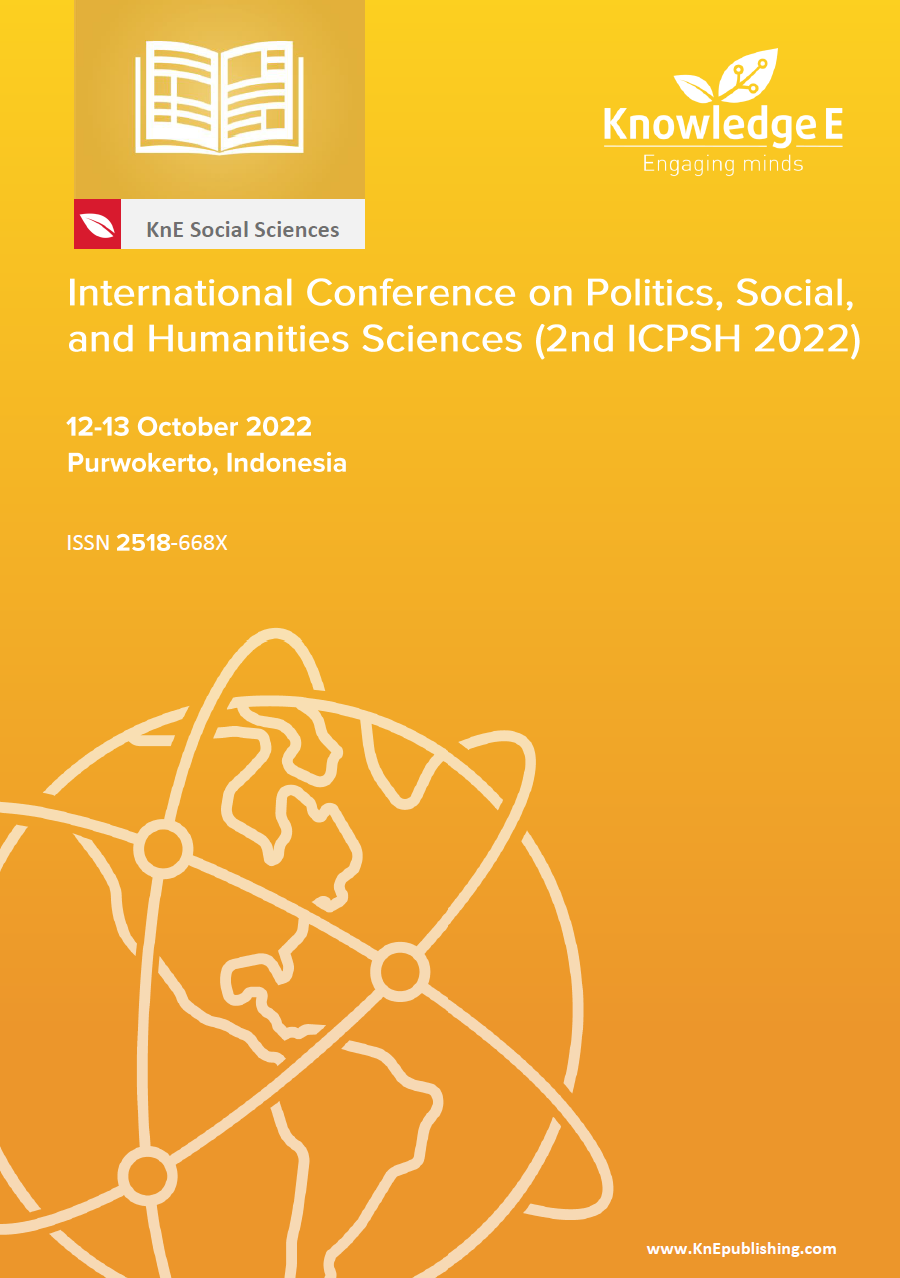Smartize and Humanize People in the Village for Every Pandemic
DOI:
https://doi.org/10.18502/kss.v8i3.12850Abstract
The use of the internet in the village has risen to the smart-village concept in which the communication pattern between members of the village community uses the internet effectively and efficiently. The use of internet-based social media is also increasing in both frequency and intensity. However, the traditional pattern of village communities, which are more personal and flexible, creates a gap with applying smart villages that are impersonal, mechanical, and precise. Therefore, it is interesting to examine the application of smart villages that are to the conditions of the village community; in this case, the application of smart villages that are more realistic to the needs of the community, namely humanized smart villages or humanized-smart villages. This study uses a case study approach by comparing two villages that represent villages close to urban areas and those relatively far from urban areas. The results of this study show that the use and utilization of the internet will naturally create marginal or non-eligible community groups. Therefore, in the concept of a humanized smart village, a model can be formulated that allows these marginalized communities to be intensely involved in using the internet and social media. The model is characterized by inclusive, deconstructive, mediation, and institutionalization. In this concept, humanized or humane is indicated by fulfilling the rights of community groups who can’t use and utilize the internet and social media to become systematically involved.
Keywords: humanized smart villages, inclusive, deconstructive, mediation, institutionalization
References
https://wearesocial.com/blog/2020/01/digital-2020-3-8-billion-people-use-socialmedia accessed 24/11/2020.
https://wearesocial.com/blog/2020/01/digital-2020-3-8-billion-people-use-socialmedia accessed 24/11/2020.
Sukarso dan Niken Paramarti Dasuki. Media Sosial dan Dekonstruksi Partisipasi Masyarakat dalam Perumusan APBDes, makalah Seminar Nasional “Membangun Kolaborasi Strategis antara Perguruan Tinggi, Pemerintah, Bisnis, dan Masyarakat Menuju Kampus Merdeka dalam Era Revolusi 4.0”. Purwokerto, 6-7 October 2020.
https://serayunews.com/berita/desa-digital-di-banyumas-berpotensimenjamur accessed 2/12/2020
Sukarso dan Niken Paramarti Dasuki. Media Sosial dan Dekonstruksi Partisipasi Masyarakat dalam Perumusan APBDes, makalah Seminar Nasional “Membangun Kolaborasi Strategis antara Perguruan Tinggi, Pemerintah, Bisnis, dan Masyarakat Menuju Kampus Merdeka dalam Era Revolusi 4.0”. Purwokerto, 6-7 October 2020.
Arnstein SR. A Ladder Of Citizen Participation. J Am Plann Assoc. 1969;35(4):216–24.
Knappe H. Participatory and Deliberative Democracy: From Equality Norms to Argumentative Rationalities. Doing Democracy Differently: Political Practices and Transnational Civil Society. Opladen, Berlin, Toronto: Verlag Barbara Budrich; 2017. pp. 45–76., Retrieved from http://www.jstor.org/stable/j.ctvbkk41f.8
Cambridge B. Validity through Dialogue. Teach Learn Inq. 2013;1(1):19–21.
Dunn WN. Pengantar Analisis Kebijakan Publik. Yogyakarta: Gadjahmada University Press; 2000.
Hogwood BW, Gunn LA. Policy Analysis for the Real World. New York: Oxford University Press; 1984.
Patton CV, Sawicki DS. Basic Methods of Policy Analysis and Planning. Englewood Cliffs (New Jersey): Prentice-Hall; 1986.
Weimer DL, Vining AR. Policy Analysis: Concepts And Practice. 3rd ed. New Jersey: Prentice-Hall, Inc.; 1999.
https://pakarkomunikasi.com/pengertian-media-sosial-menurut-para-ahli accessed 25/11/2020.
H. Samih (2019) Smart cities and internet of things, Journal of Information Technology Case and Application Research, 21:1, 3- 12, https://doi.org/10.1080/15228053.2019.1587572.
Tetteh BK, Ansah IG, Donkoh SA, Appiah-Twumasi M, Avornyo FK, Shaibu MT, et al. Perceptions of weather variability and climate change on goat producers’ choice of coping and adaptation strategies: evidence from climate-smart and non-climatesmart villages in the Jirapa and Lawra districts. Clim Dev. 2020;12(7):614–25.
Li R, Chen K, Wu D. Challenges and Opportunities for Coping with the Smart Divide in Rural America. Ann Am Assoc Geogr. 2020;110(2):559–70.
Esashika D, Masiero G, Mauger Y. An investigation into the elusive concept of smart cities: a systematic review and meta-synthesis. Technol Anal Strateg Manage. 2021;33(8):957–69.
Zhang S, Zhen F, Wang B, Li Z, Qin X. Coupling Social Media, and Agent-Based Modelling: A Novel Approach for Supporting Smart Tourism Planning. J Urban Technol. 2022;29(2):79–97.
Bartelt VL, Urbaczewski A, Mueller AG, Sarker S. Enabling collaboration and innovation in Denver’s smart city through a living lab: a social capital perspective. Eur J Inf Syst. 2020;29(4):369–87.
Sukarso NP, Noviko S. 2021, Humanized-Smart-Village Model, paper on International Conference The 3rd ICoGPASS: Transforming Post Covid-19 Governance in Dynamic Society, Inclusivity, Accountability, Sustainability, Digitalilzation, IAPA-LAN Jakarta, 18

